When people think of hair restoration, they frequently think of hair transplants. Many women with female pattern hair loss who consider hair transplant are most often not qualified for hair transplant surgery. Female pattern hair loss is distinguished by a diffuse pattern of hair thinning. Since hair transplantation requires multiple small incisions into the scalp, women with diffuse hair loss face a high risk of permanent hair loss. This is in contrast to male pattern hair loss where hair is transplanted to bald, non-hair bearing skin. There are some situations where a hair transplant can be performed for a woman.
Throughout my career, I’ve been performing hair transplant surgery. I’m also the founder of TrichoStem Hair Regeneration Center which use a non-surgical treatment for male and female pattern hair loss, which was first developed from technology I used to improve hair transplant results.
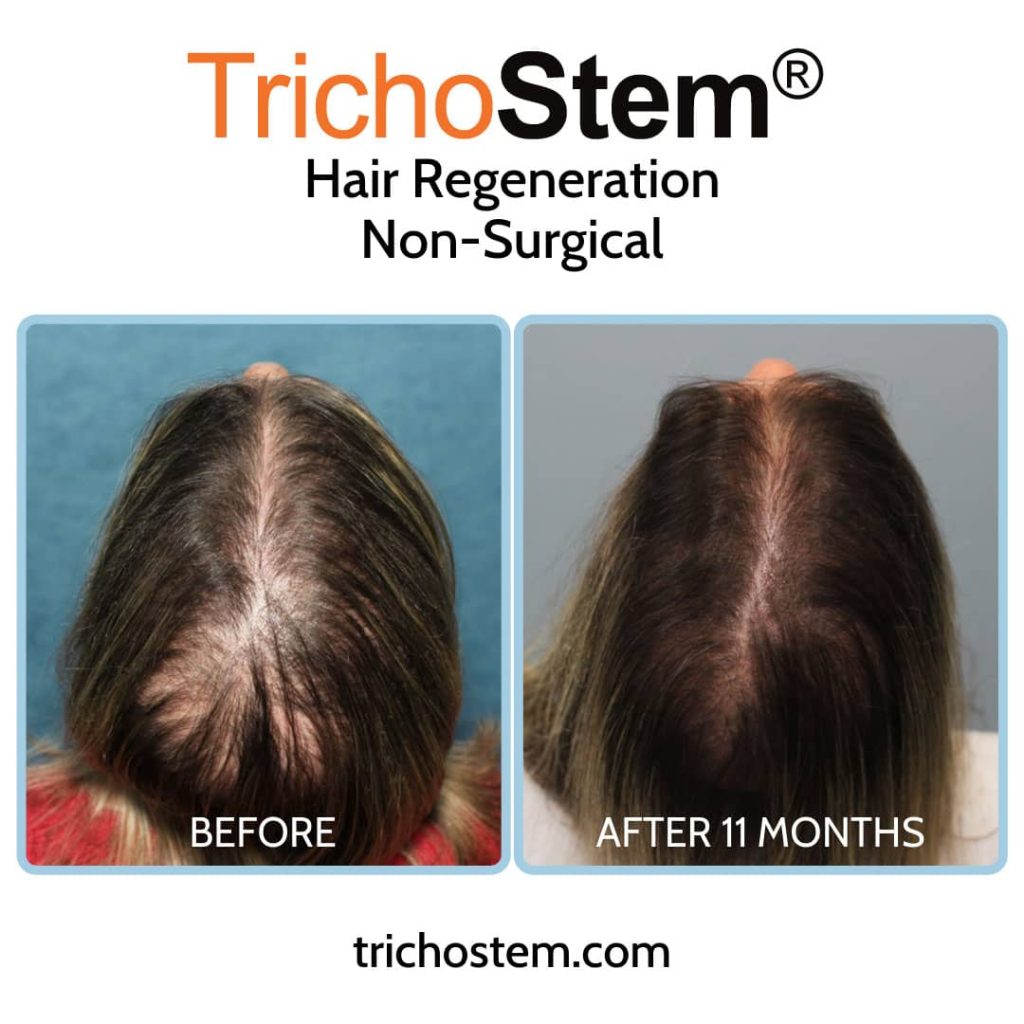
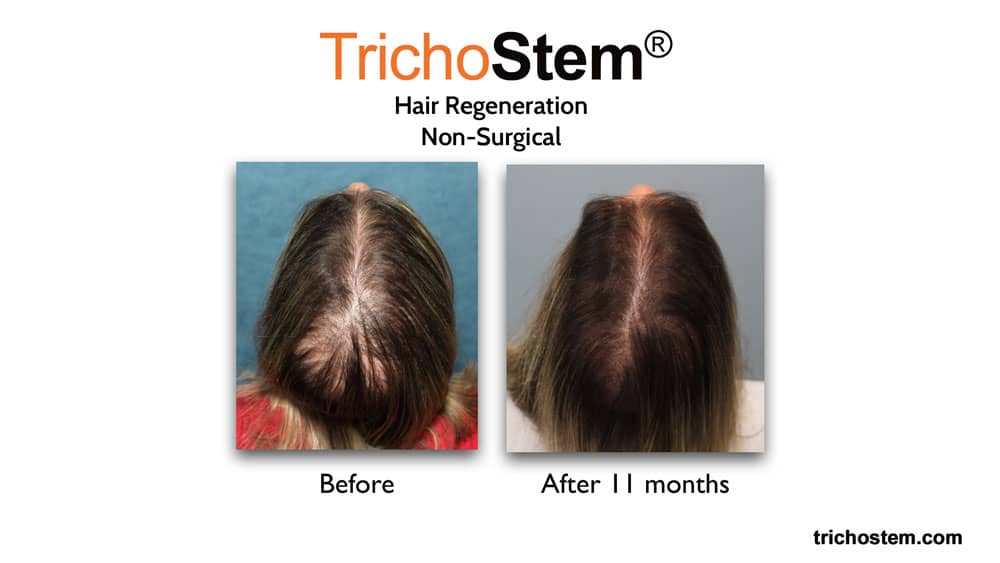
Common Causes of Hair Loss in Women
The most common causes of hair loss in women are:
- female pattern hair loss,
- telogen effluvium, and
- hormonal changes such as pregnancy and childbirth.
The hair thins diffusely throughout the scalp in typical female pattern hair loss.
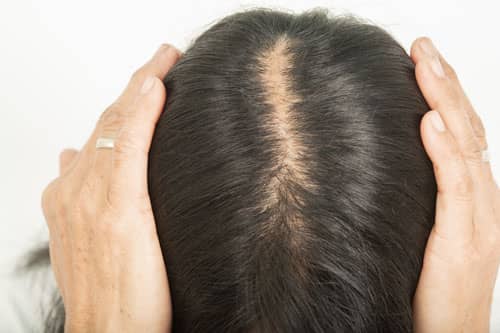
Female Pattern Baldness
Female pattern baldness is the most common cause of female hair loss, which affects approximately 30% of women under the age of 50 and more than 50% of women over the age of 50. Minoxidil and spironolactone were the only treatments available for female pattern hair loss in the past. Minoxidil appears to delay the natural hair shedding cycle, while also extending the hair growth cycle, resulting in more hair on the scalp. Most of my female pattern hair loss patients see limited benefit from minoxidil that’s difficult to sustain, and discontinue use. As reported to me by patients who used this drug before coming to see me, the drug spironolactone, which is commonly prescribed as a testosterone-blocker, has limited to no benefit.
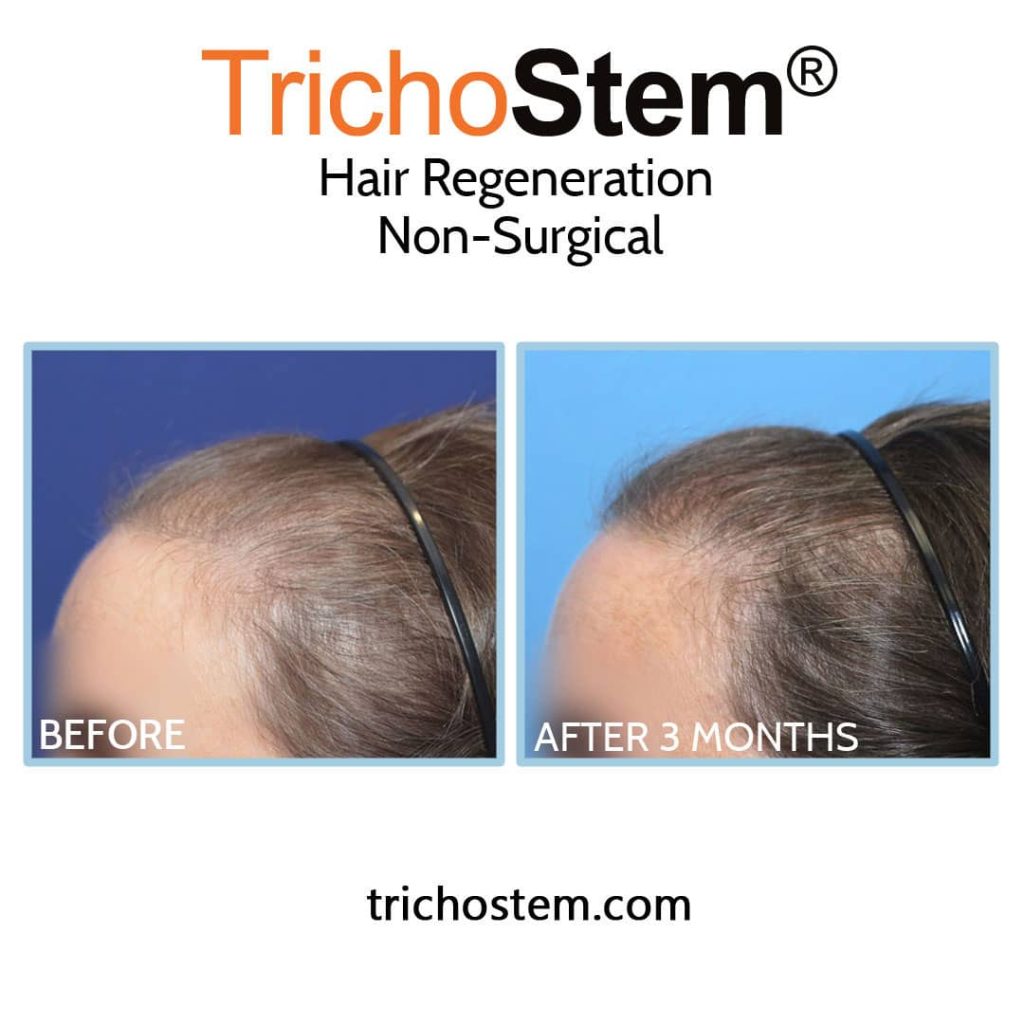
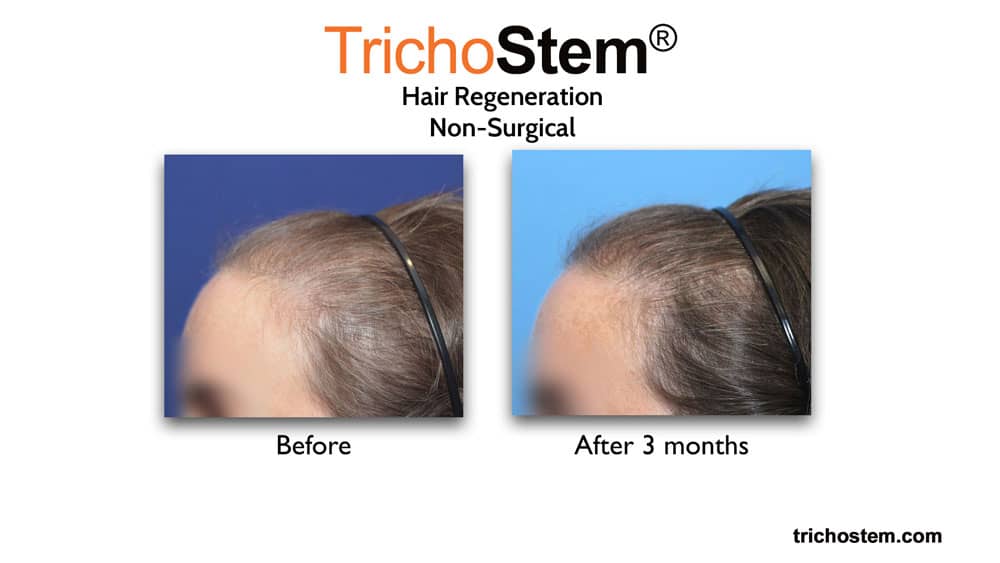
TrichoStem Hair Regeneration Female Success Rate
Since 2011, we have successfully treated female pattern hair loss with our TrichoStem Hair Regeneration treatment. Since this is a non-surgical injection treatment, there is no collateral loss associated with hair transplantation. The treatment primarily consists of platelet-rich plasma, a concentration of healing and growth factors found in a patient’s own blood, and extracellular matrix produced by the company ACell. Extracellular matrix is an advanced wound healing material that was first used in regenerative medicine, and in advanced surgical healing. We have achieved over 99% success rate with this treatment for female pattern hair loss, with patients showing visible improvement in hair coverage and density by thickening thinning hair, and stimulating growth from hair follicles that were previously not growing hair, but are still viable. With only one injection treatment, the benefits last for 3-5 years. Some patients benefit from a booster treatment 18 to 24 months after the initial treatment.
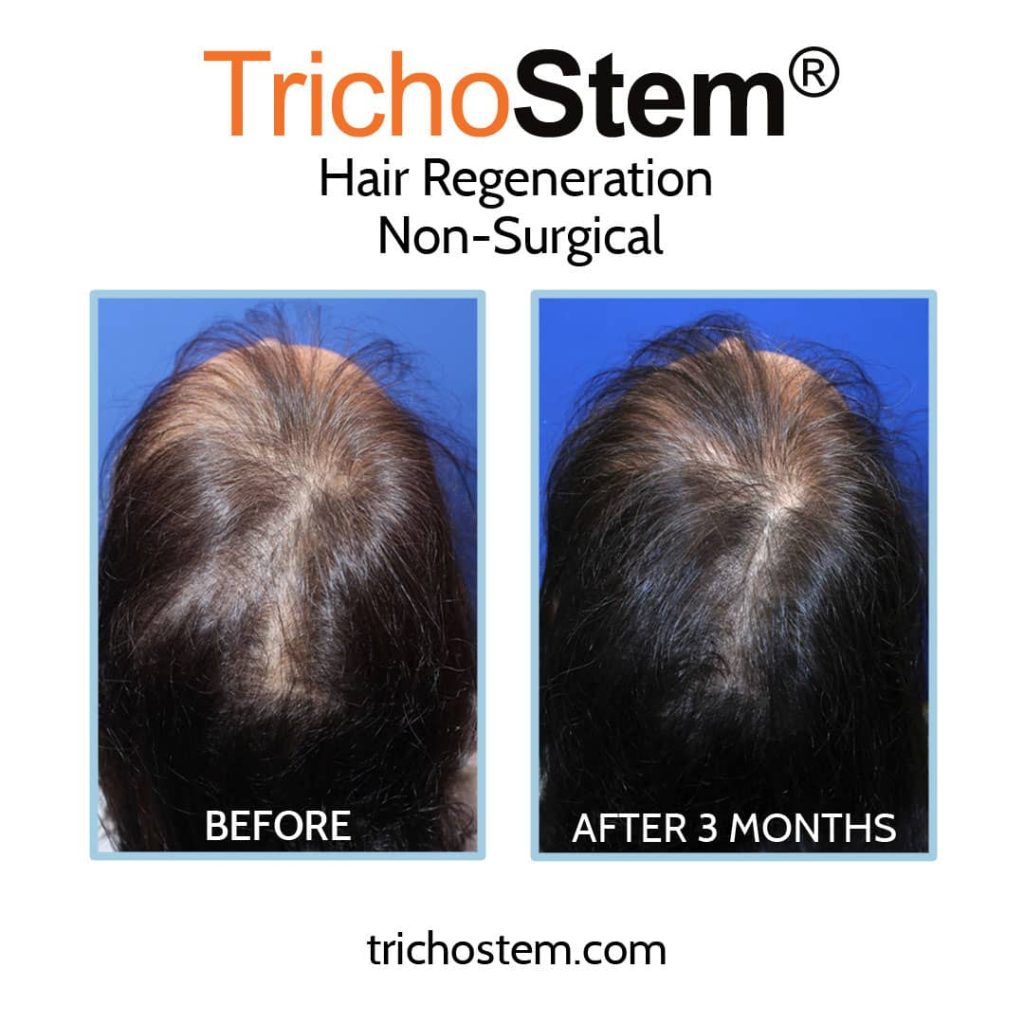
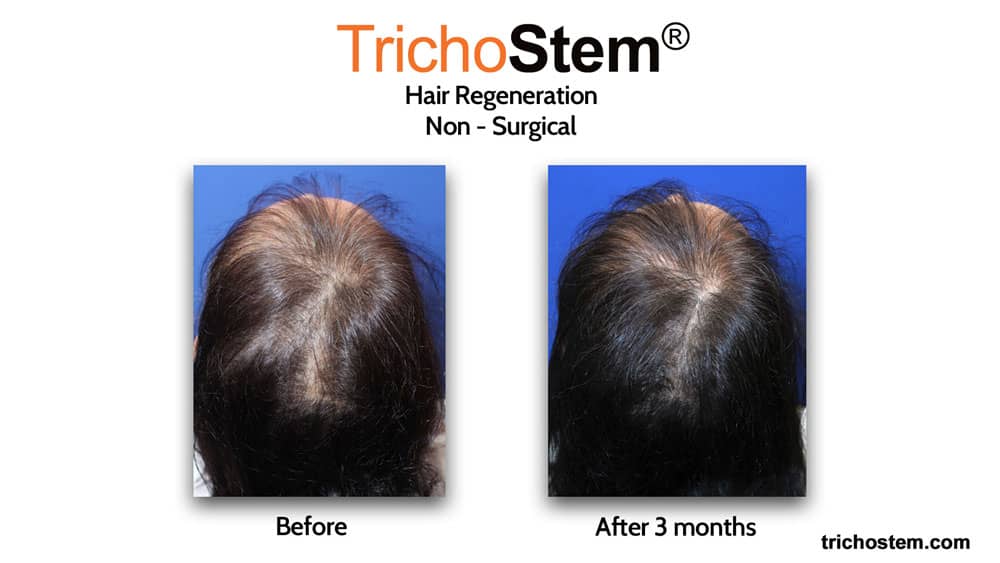
When Women Can Have Hair Transplant?
Women can have hair transplants in certain situations. A transplant may be used to treat severe pattern hair loss in which the hair part has widened significantly, and has resulted in smooth-bald areas of the scalp for more than 5 years. To reduce collateral loss, transplantation would be limited to areas of mostly smooth scalp with little to no nearby native hair.
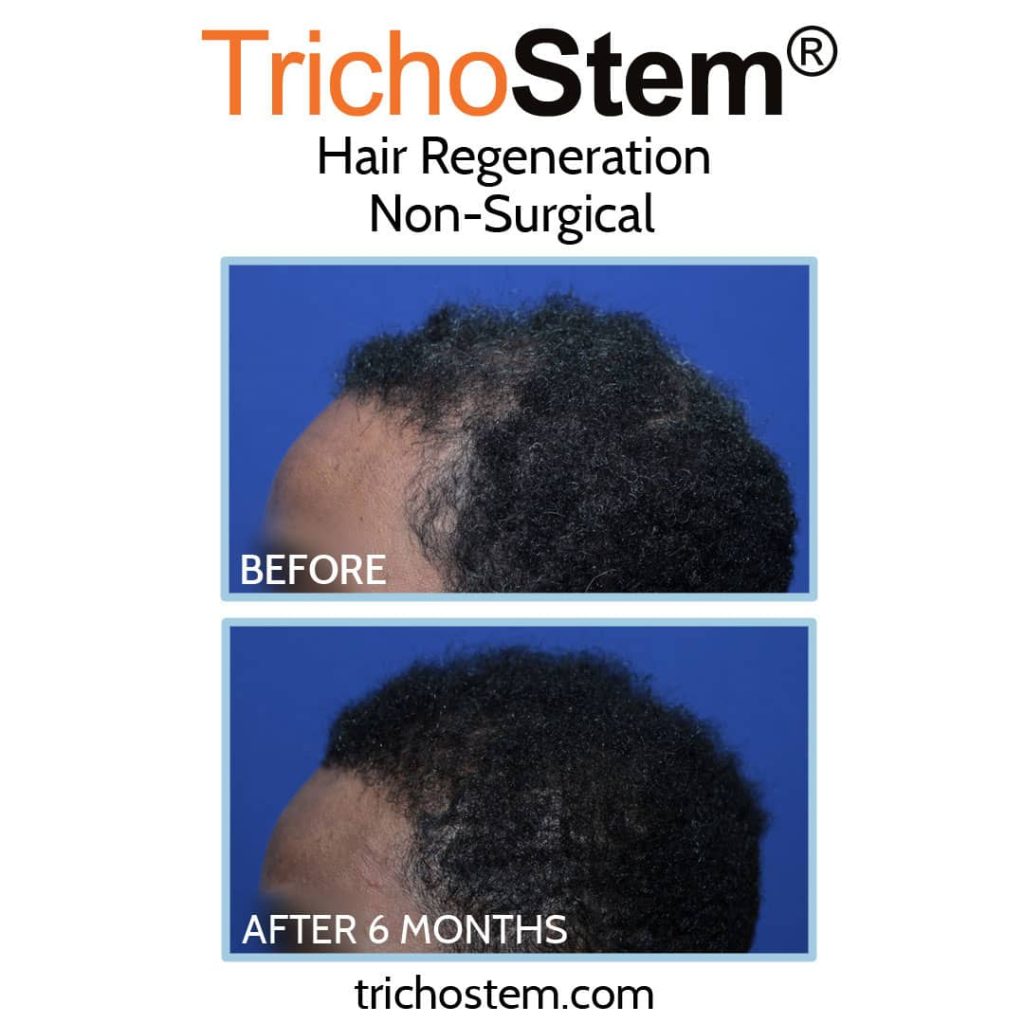
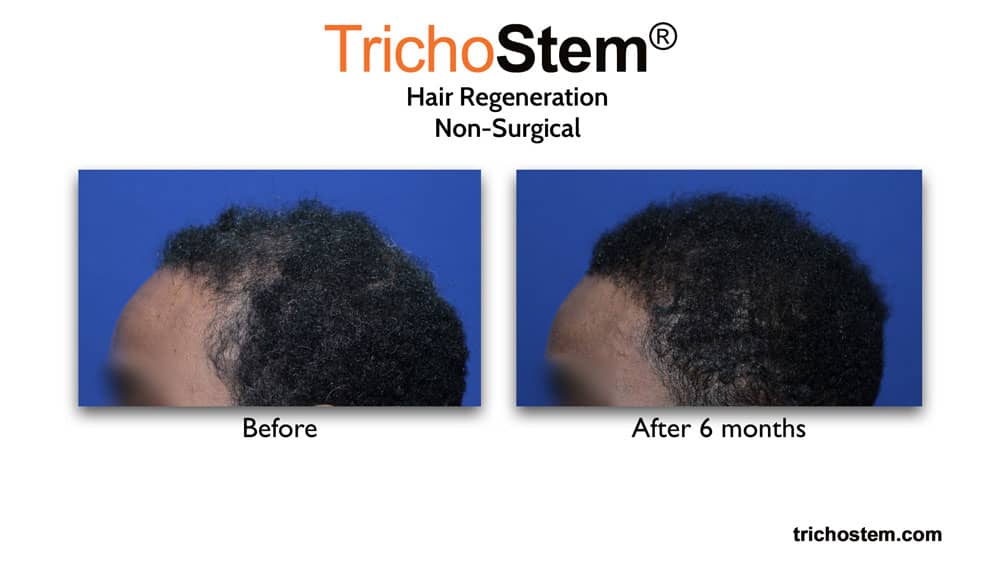
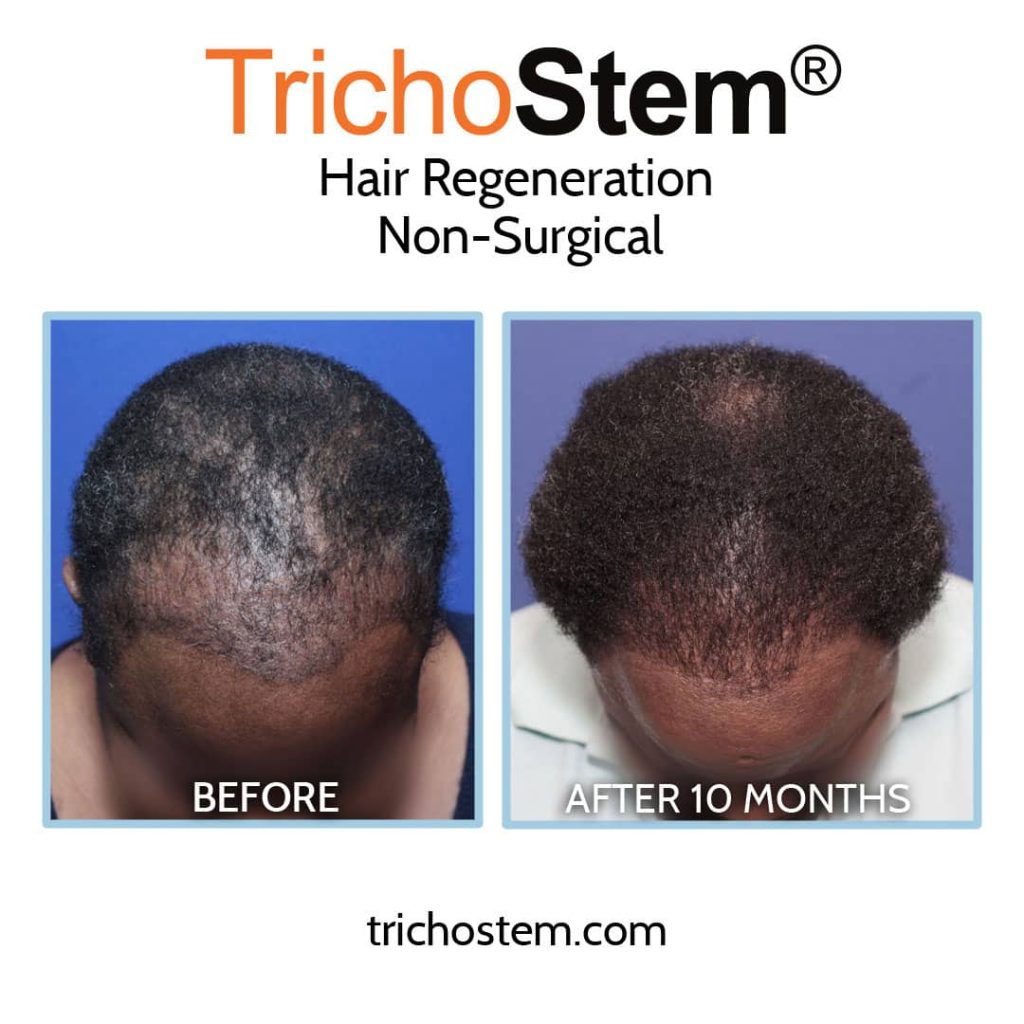
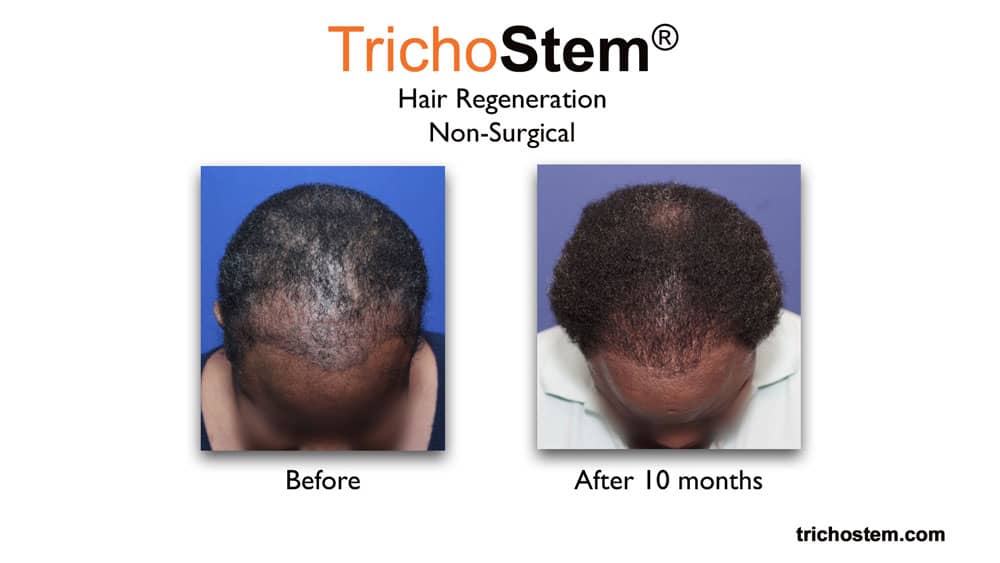
The use of chemicals such as hair relaxers can result in permanent hair follicle loss. In some cases where the hair has thinned due to chemical use, we have been able to make a significant improvement for women with the TrichoStem Hair Regeneration treatment.
Another procedure is hairline lowering. Hairline lowering is most commonly performed on women who believe their hairline is too high, or that their forehead is too exposed due to a lack of hair. Hairline lowering is approached in the same way as any other hair transplant, with adjustments made for the area of the forehead as needed. Patients should expect to have multiple hairline lowering procedures to achieve natural-looking density.
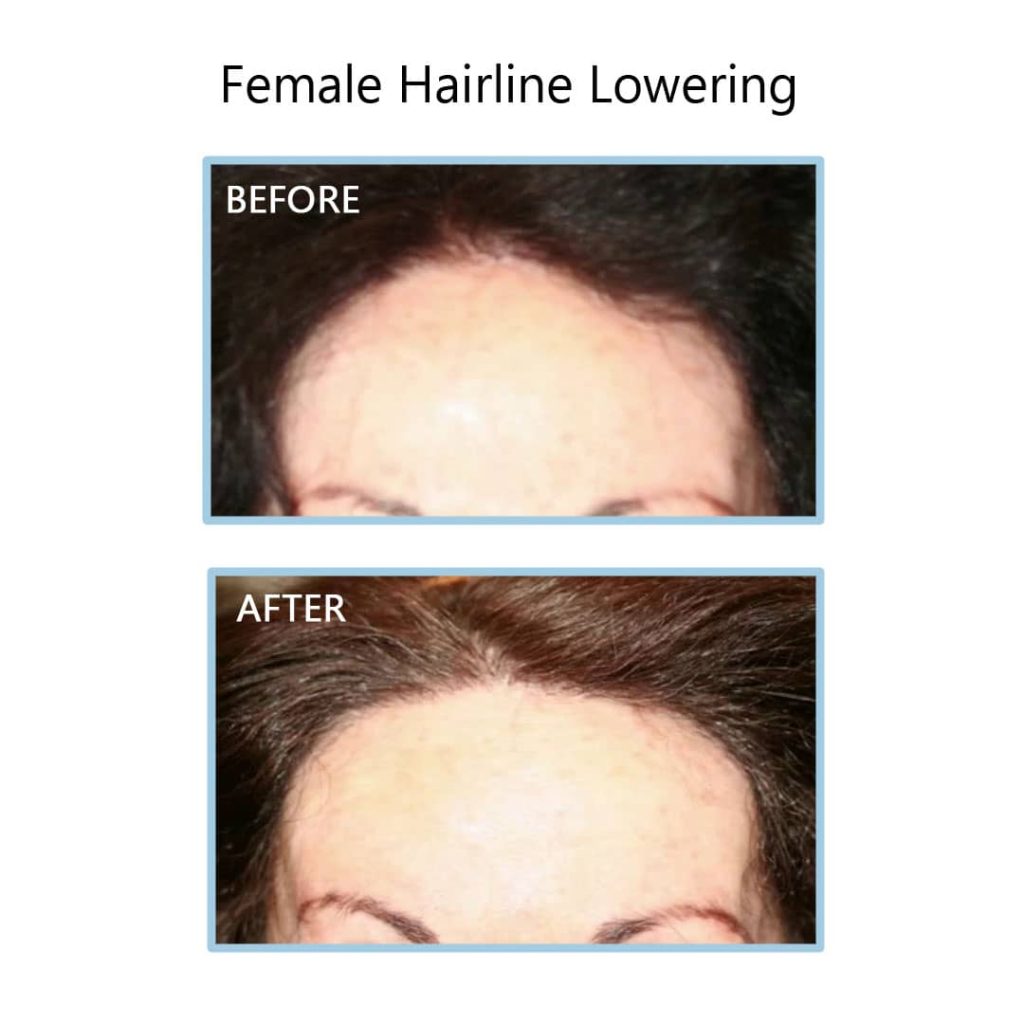
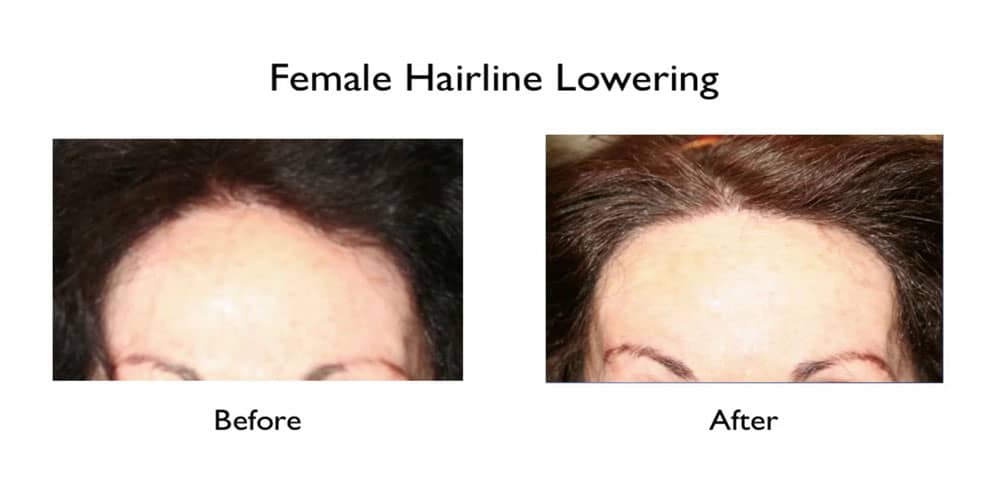
When compared to men, women have fewer treatment options for pattern hair loss. For example, the drug finasteride may be effective for men, but has no role in the treatment of female pattern hair loss.
The work we did to develop TrichoStem Hair Regeneration has successfully helped women address their hair loss without surgery, even though the majority of them would not be candidates for hair transplantation.
